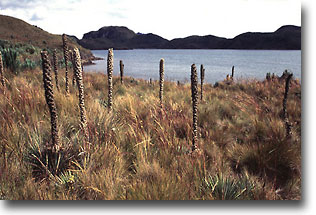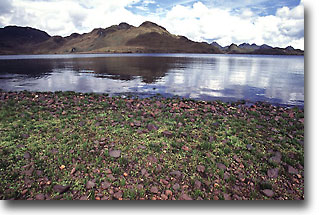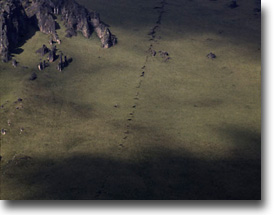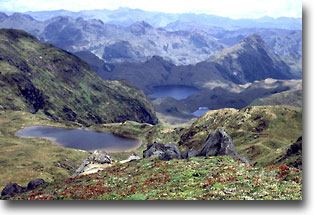 |
 |
| One of things I enjoy about Ecuador are the variety of different regions, climates and cultures that are found throughout the country. My favorite areas of Ecuador are undoubtly the highlands. I suppose this is a result of having lived most of my life on the flat farming plains of the midwest United States. |
 |
 |
The highlands are filled with incredible views of majestic snow capped volcanos, rugged terrain, hidden valleys, small lakes, waterfalls and wildlife. But it is a region where the weather hides its natural beauty in the clouds most of the year only to reveal it for a few moments to the lucky individuals who happen to pass by. |
|
It is a region with legends of Incan treasure hidden after the death of the Inca Atahualpa. It is a region that can kill the foolish adventurer as one can easily become lost in the terrain. Navigating the paramo becomes extremely difficult once the clouds reduce the visibilty to just a few feet. There are sections so desolate that a disoriented adventurer could literally wander around for weeks without finding food or help. |
 |
 |
My favorite section of Paramo is located along the road from Quito over the continental divide to the small town of Papallacta. This incidently is the same route that Gonzalo Pizzaro took on his trip eastward that eventually led to the discovery of the Amazon River. One should not lose sight of the fact that many of the 10,000 Indians and some 300 Spaniards who died or starved to death on that expedition did so as a result of the hardships endured while crossing the paramo. |
| This area is part of the Coca-Cayambe reserve and habitat for numerous animals. The section around the continental divide and the communications relay equipment located just above the virgin at Guamani are some of the best areas in Ecuador to see Andean condors. It also provides a spectacular vista of the snow-capped volcano Antisana. |
 |
 |
It is home to the puma, spectacled bear, deer, rabbits and foxes. I always keep a look out for a bear or a puma but I have yet to see one in Ecuador that wasn't in the Quito zoo. A friend who lives up that way tells me that pumas are around as they've dragged off some llamas and calves. I haven't seen a deer in this section but I have seen deer tracks around numerous lakes... I've seen foxes numerous times and rabbits briefly as they dart between clumps of paramo grass. |
|
Locals will be quick to point out the Incan steps on your left as you climb up towards Papallacta. There are reportedly several still unexcavated Incan sites in this area as well as other pre-Incan ones to the north around the town of Cayambe.
Papallacta is a sleepy little town but it is home to some really nice pools fed by hot springs that are worth the trip. I also highly recommend the trucha or trout served at the pool's restaraunt. |
 |
 |
The paramo can be extremely unhospitable for long periods of time and can be rather boring to photograph under flat light. Yet it rewards the occasional adventurer with glimpses of its true beauty and the some of the most spectacular views in the country. |